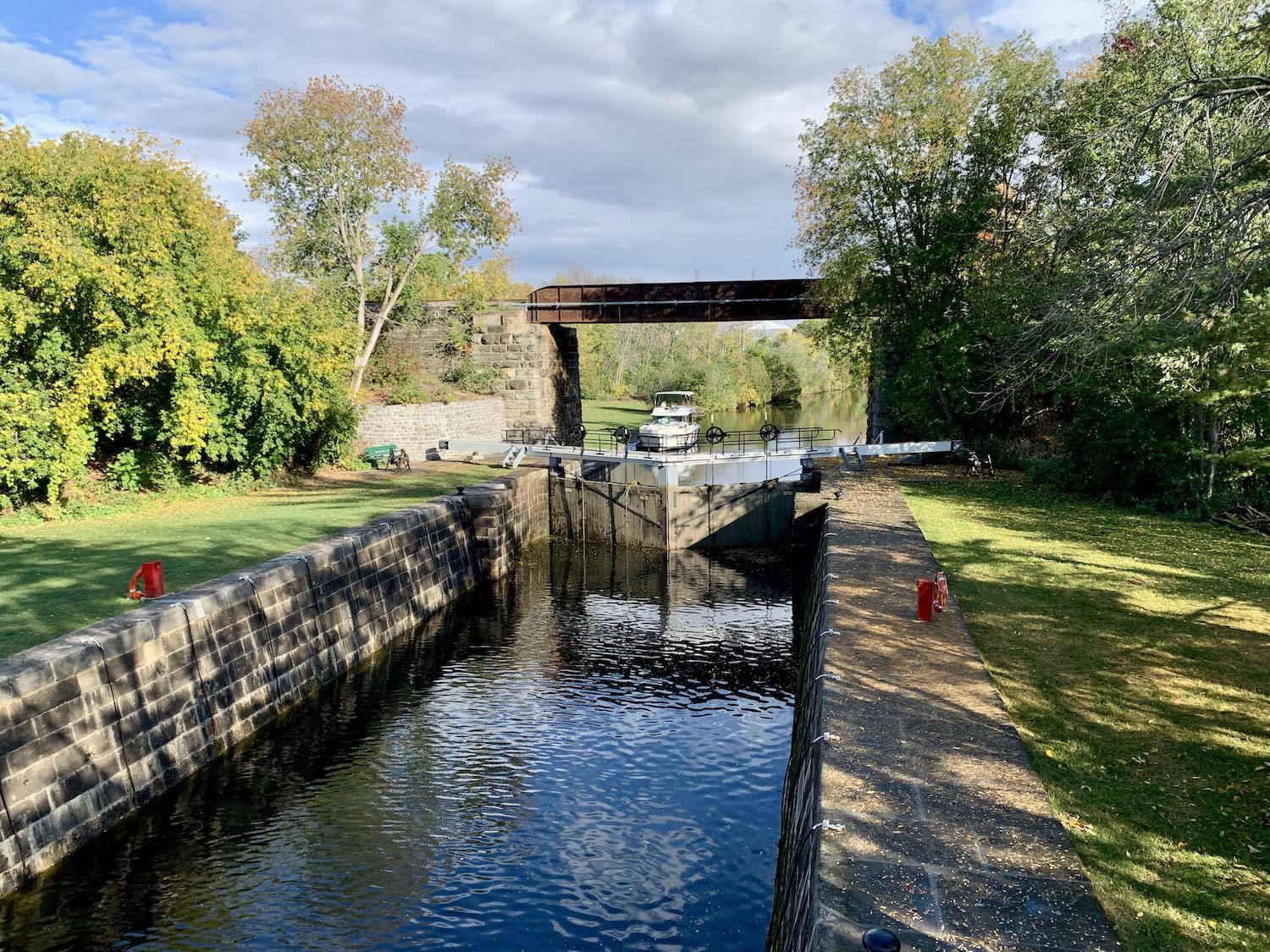
Each lockstation on the Rideau Canal has its own personality. This tranquil one is Old Slys/Jennifer Bain
Boating lazily down the Rideau Canal National Historic Site first on a hot summer journey and then on a cool and rainy fall one to admire the fall colours, I wonder how I lived this long in Ontario oblivious to the magic of this waterway. We glide into one lock after another, watching as Parks Canada staff use hand-powered winches to operate the gates and sluice valves, raising or lowering us from one water level to another as the watertight chambers either fill or empty.
Until now, I only thought of the canal as a peaceful place to stroll alongside in Ottawa, and a busy spot to skate in winter when it’s transformed into “the world’s largest skating rink” and is the highlight of the annual Winterlude festival in the Canadian capital.
Two trips with Le Boat — exploring the canal between Smiths Falls and Ottawa, sleeping and eating in the rented houseboat-style yacht, popping into picture-perfect villages and charming towns — set me straight. They also gave me a safe escape with a bubble of family and friends during COVID-19.
According to Parks Canada, the Rideau Canal “was conceived in the wake of the War of 1812 to serve as a war-time supply route providing a secure water route for troops and supplies from Montreal to reach the settlements of Upper Canada and the strategic naval dockyard at Kingston.”
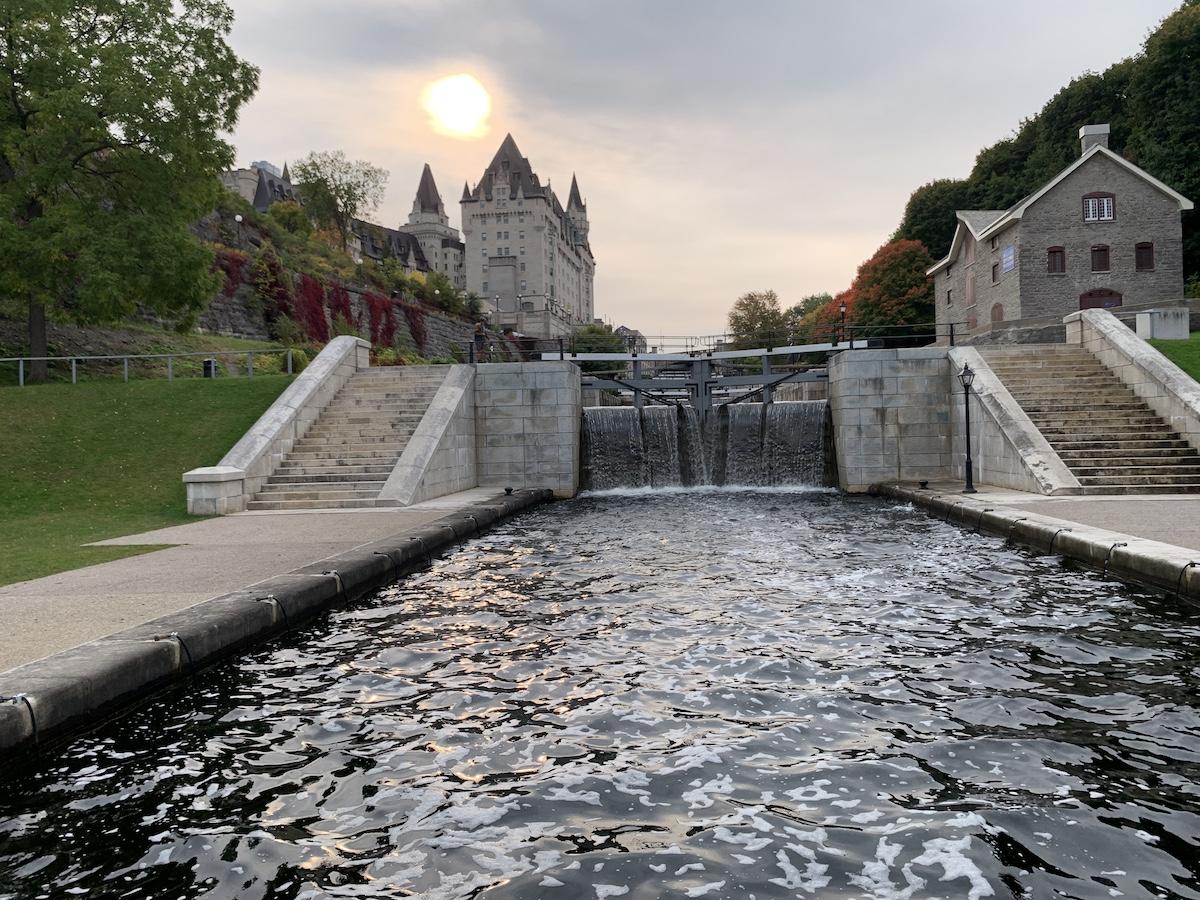
In Ottawa, there is a flight of eight locks between Parliament Hill and the Fairmont Chateau Laurier/Jennifer Bain
The original plan called for dams and locks that could handle small barges, but Lieutenant-Colonel John By, a military engineer from England, wisely advocated for a larger lock system to accommodate the new steamboats that were starting to ply the Great Lakes. Some lock stations would even get fortified lockmaster houses and blockhouses in a bid by the British to protect the region from a possible American invasion.
Work began in 1827 using Irish immigrants, French Canadians and Scottish stonemasons to “push the canal through the rough bush, swamps and rocky wilderness” that had long been used as travelling and trading routes for Indigenous peoples. Many workers died, often from malaria, and are remembered with a modest Celtic Cross that stands in the trees in the shadow of the Fairmont Chateau Laurier by Ottawa’s flight of eight locks.
The Rideau Canal officially opened in the summer of 1832 with 47 locks, 23 lock stations and supporting dams and swing bridges. In 1887, it was expanded when the Tay Canal connected the town of Perth to the canal. Rideau is French for curtain and references what explorer Samuel de Champlain saw when he spotted the twin falls of the Rideau River where it meets the Ottawa River in the early 1600s.
“The construction of the canal was an incredible engineering feat at the time,” says Parks Canada in a draft management plan. “Today it still serves as a monument to the great 19th Century canal building era in North America.”
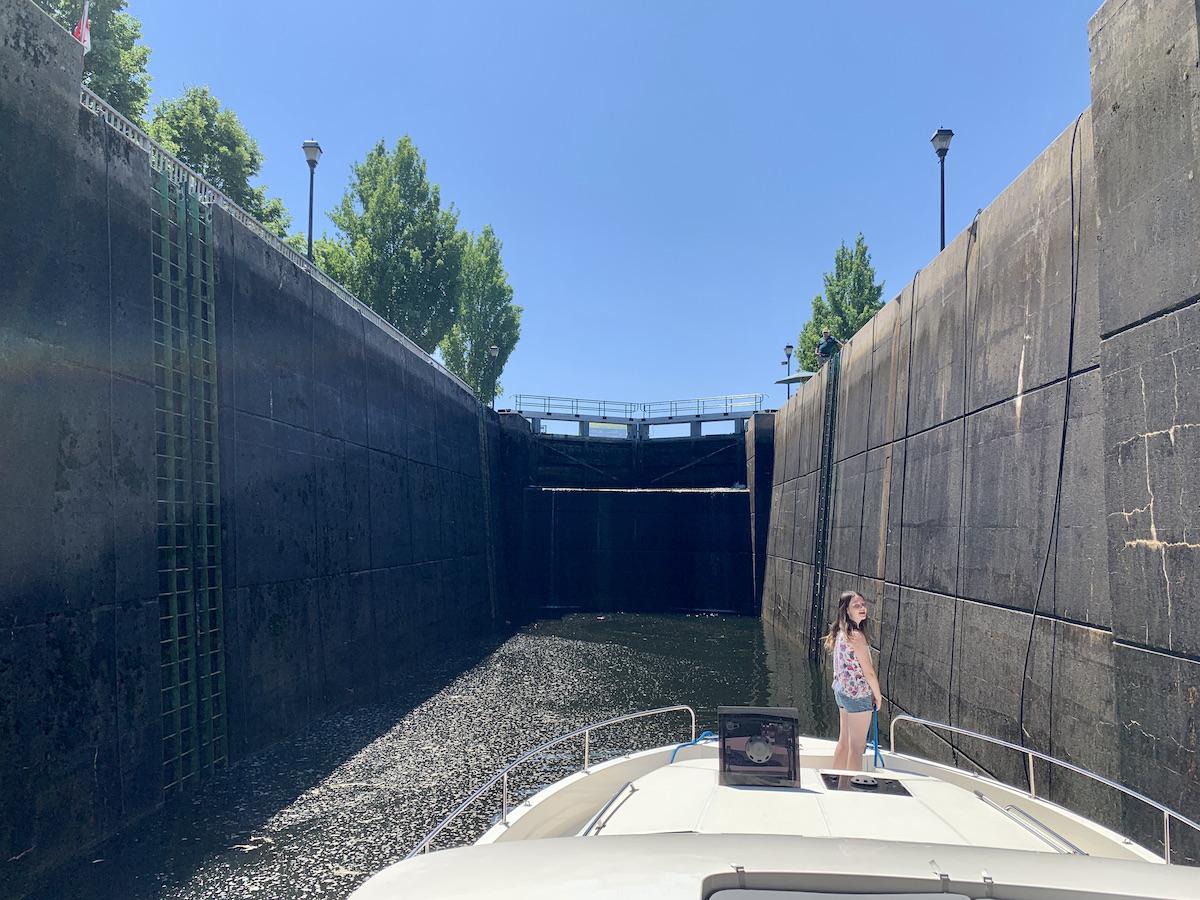
Waiting for a lock to fill with water in Smiths Falls/Jennifer Bain
The unassuming yet lengthy canal, now 202 kilometres (125 miles) long, has quietly earned multiple historic designations.
In 1925, it was declared a site of national historic significance for the construction of the canal system, the survival of a high number of original structures and its unique historical environment. In 2000, the Rideau River (a significant part of the canal) was designated a Canadian Heritage River for its human heritage and recreational values. And in 2007, the canal became a UNESCO World Heritage Site. UNESCO calls the gravity-fed canal — that takes water from upstream and moves it downstream — “the best-preserved example of a slackwater canal in North America.”
Parks Canada is in charge of the canal from its bed, to the upper controlled water elevation level, to the land used for lock stations (some with camping) and dams. It’s one of the federal agency’s busiest historical sites and sees nearly one million land-based visitors a year. (In Ottawa, the National Capital Commission maintains the parkways, green space and pathways alongside the canal.)
I owe my nautical view of the canal to a company called Le Boat that has been doing self-drive boat vacations in Europe and the United Kingdom since 1969 and arrived in Canada in 2018, partnering with Parks Canada for a Rideau Canal route.
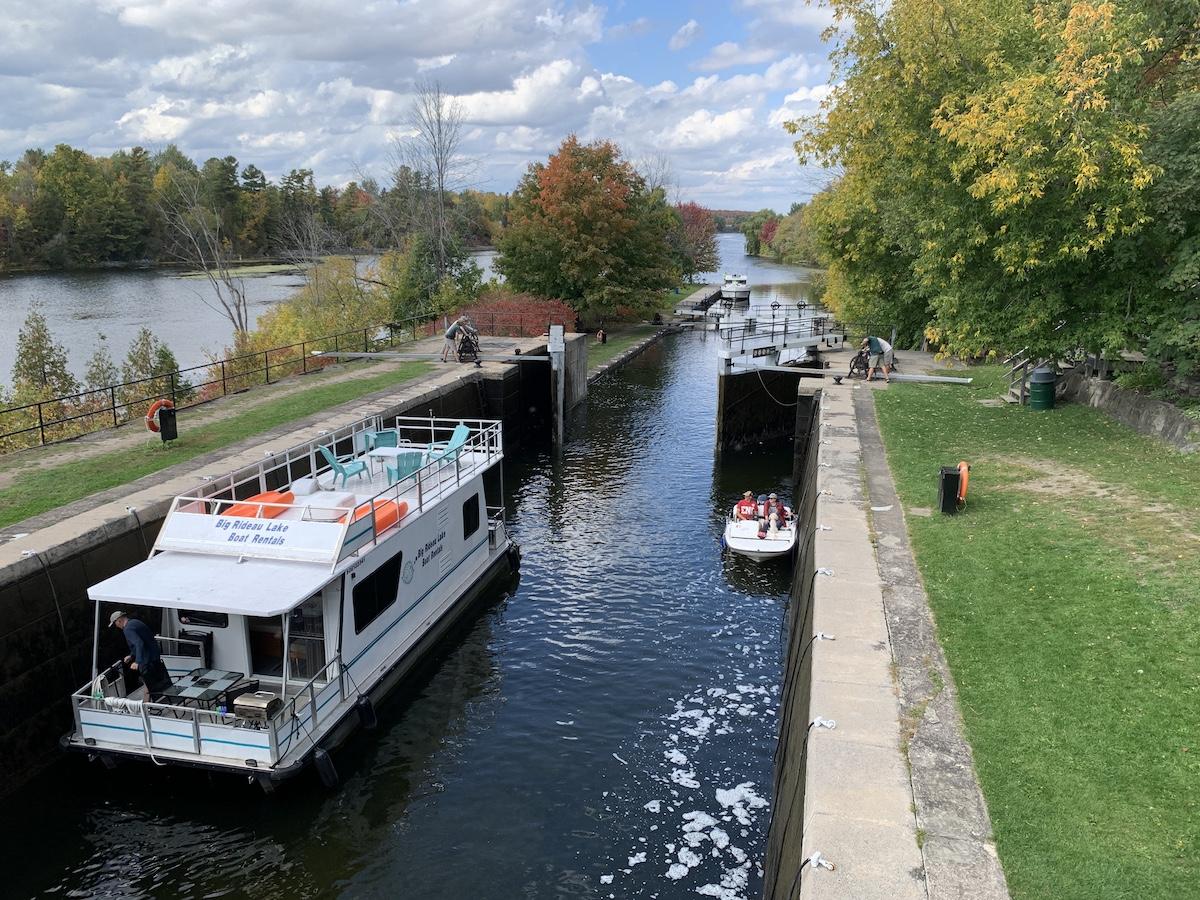
At Long Island lockstation, two boats lock together while ours parks for the night/Jennifer Bain
For novice boaters like me — I've only sailed and puttered around in small fishing boats — it’s a sweet deal because you don’t need a licence or experience. When you arrive at Le Boat’s headquarters in Smiths Falls, they take you out on the water and train you how to drive, turn and parallel park the boats, which are wrapped in safety bumpers. Inside are bedrooms, each with their own tiny bathrooms. They sleep two to 12 people and are dog-friendly to boot.
There’s a lower helm station between the kitchen and bedrooms, but we used the upper one on the flybridge, where there are sunbeds, a propane barbecue hotplate and seating. Speeds are capped at 10 kilometres (6 miles) an hour.
Here’s how it works if you’re doing “upbound lockages.” You stop at the “blue line” — painted stripes along a holding area — until waved in. You enter at the downstream level, looping bow and stern vessel lines around black drop cables attached to the lock walls. When the lower lock gates closed, you turn off the engine and wait as the upstream sluice valves are cranked open so the water level would rise and equalize with the upstream level. When the upper lock gates opened, you carry on. And, of course, if you’re doing downbound lockages, the principle is the same but some of those steps are reversed.
The canal can only be navigated between May and October. In 2019 (pre-COVID), more than 61,000 vessels passed through one or more locks. And COVID has temporarily shuttered spots like the Rideau Canal Visitor Centre in Smiths Falls, and the Merrickville Blockhouse National Historic Site, built to be a mustering point for local militia if war broke out, and a place to store provisions, munitions and arms.
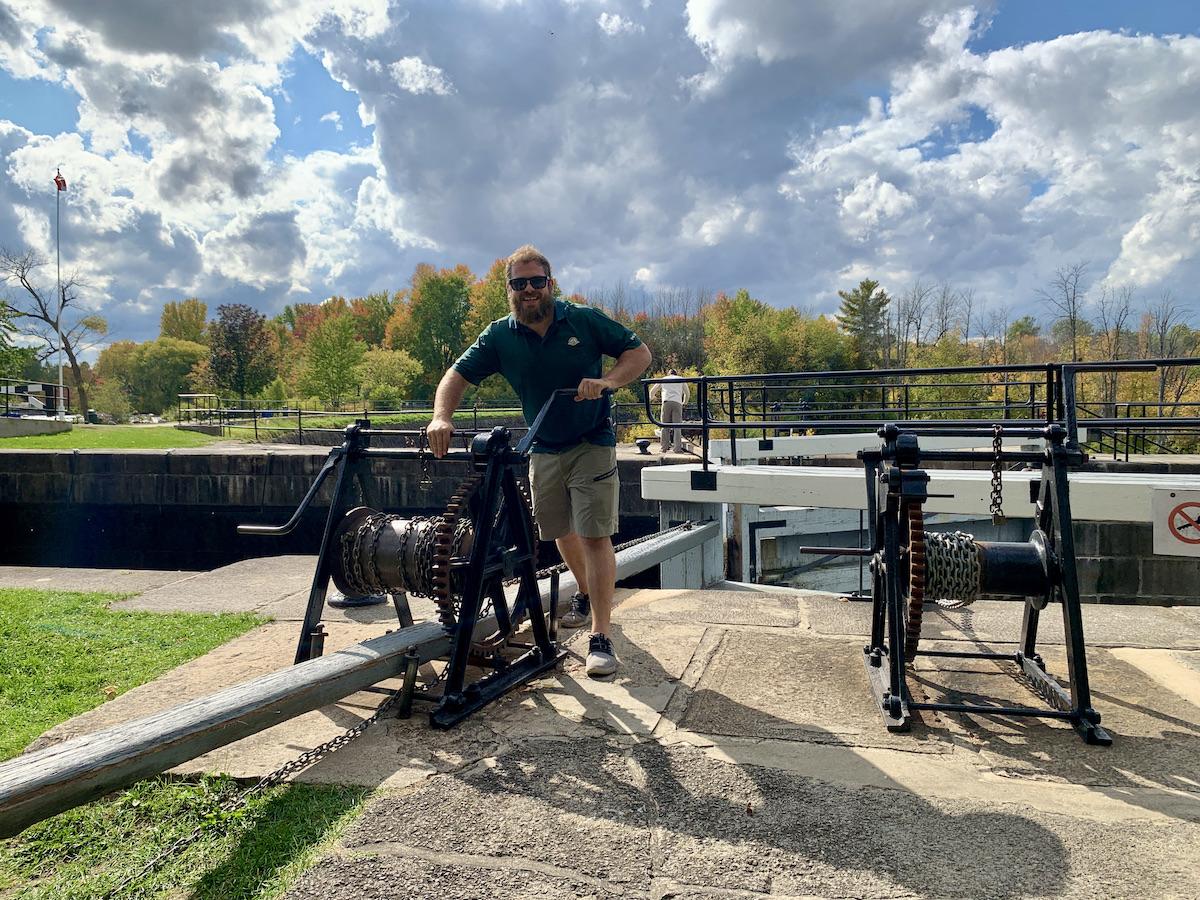
Rob Schnare, acting lockmaster at Long Island, shows how to operate the locks/Jennifer Bain
My two 2020 journeys were blessedly quiet, with hardly any boats on the canal and plenty of room to park at each lock station. We cruised past farm land, forests and wetlands, waving at the odd kayaker or boater, admiring loons and Great blue herons. We weren’t lucky enough to see an American eel that lives in and along the waterway and is of cultural importance to Indigenous people.
I still remember the kind words of Rob Schnare, acting lockmaster at Long Island Lockstation, after we pulled awkwardly in. “You’re a much better driver than the houseboat we saw earlier this summer. The boat ended up sideways in the lock.”
But even if we had been the sideways boat, Schnare and his colleagues would have calmly talked us through the situation. “The Rideau is known for our friendly customer service,” he explains. “If people are upset, we try to make things as calm and as relaxing as we can.”
Schnare gamely tries to explain the intricacies of gate crabs, wall sluices and swing bridges to me, but I don’t fully follow. What I do know is that all the Le Boats have bow and stern “thrusters” that make the boat go sideways and make parking much easier.
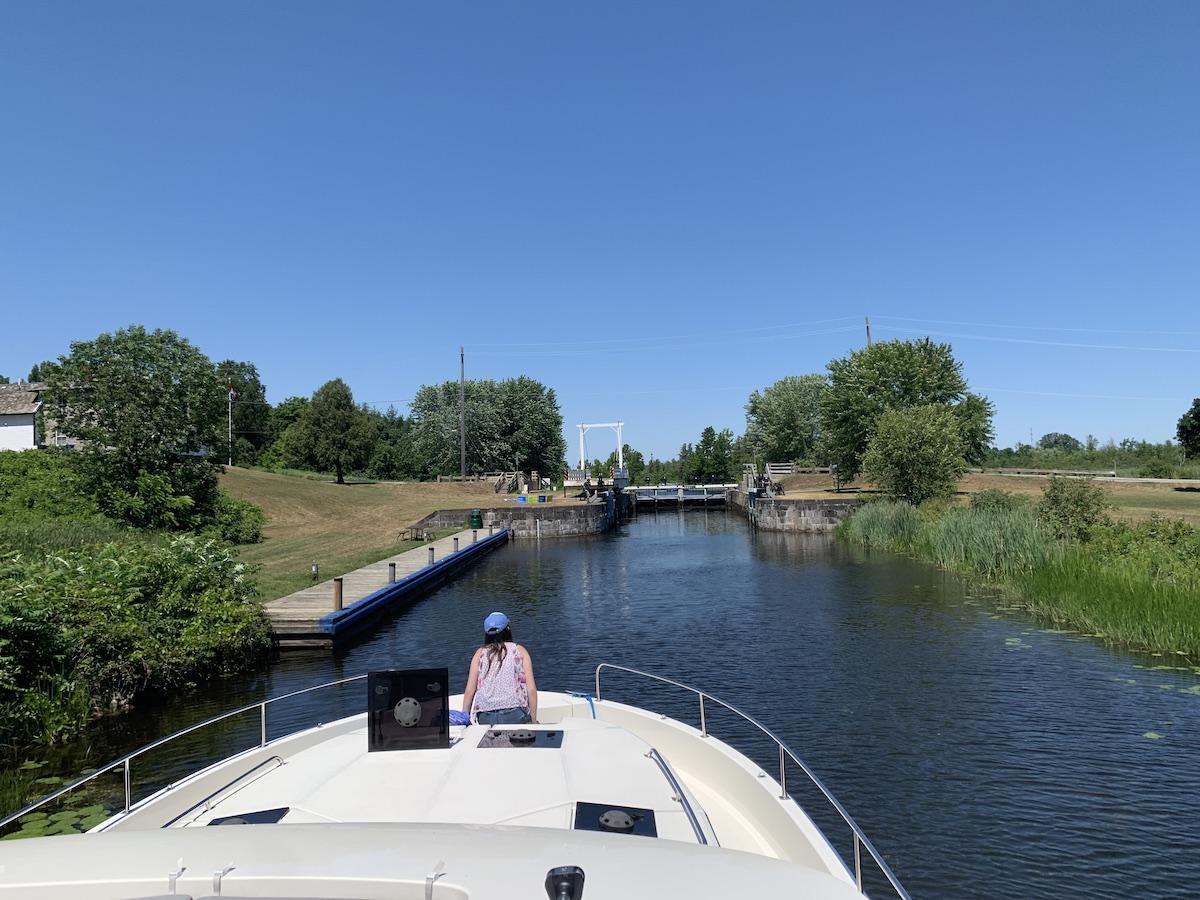
Coming into a lockstation, you usually wait at the blue line for the gates to open — unless they're already open/Jennifer Bain
I quickly learn how each lock station has its own personality — some are isolated, some are downright urban, some are steps from a community. In the village of Manotick, Watson’s Mill dates to the 1860s and serves partly as a museum but is also still a working, water-powered grist and flour mill. Merrickville — dubbed "Canada's Most Beautiful Village — is full of artists and food, namely gourmet mustard from Mrs. McGarrigle’s Fine Food Shop. We make good use of a rented kayak, dive into the canal off the back of the houseboat whenever we can, admire people casting for fish and watching sunsets.
Each trip ends just as we hit our groove, and I still have the bottom half of the canal — from Smiths Falls south to Kingston — to explore one day.
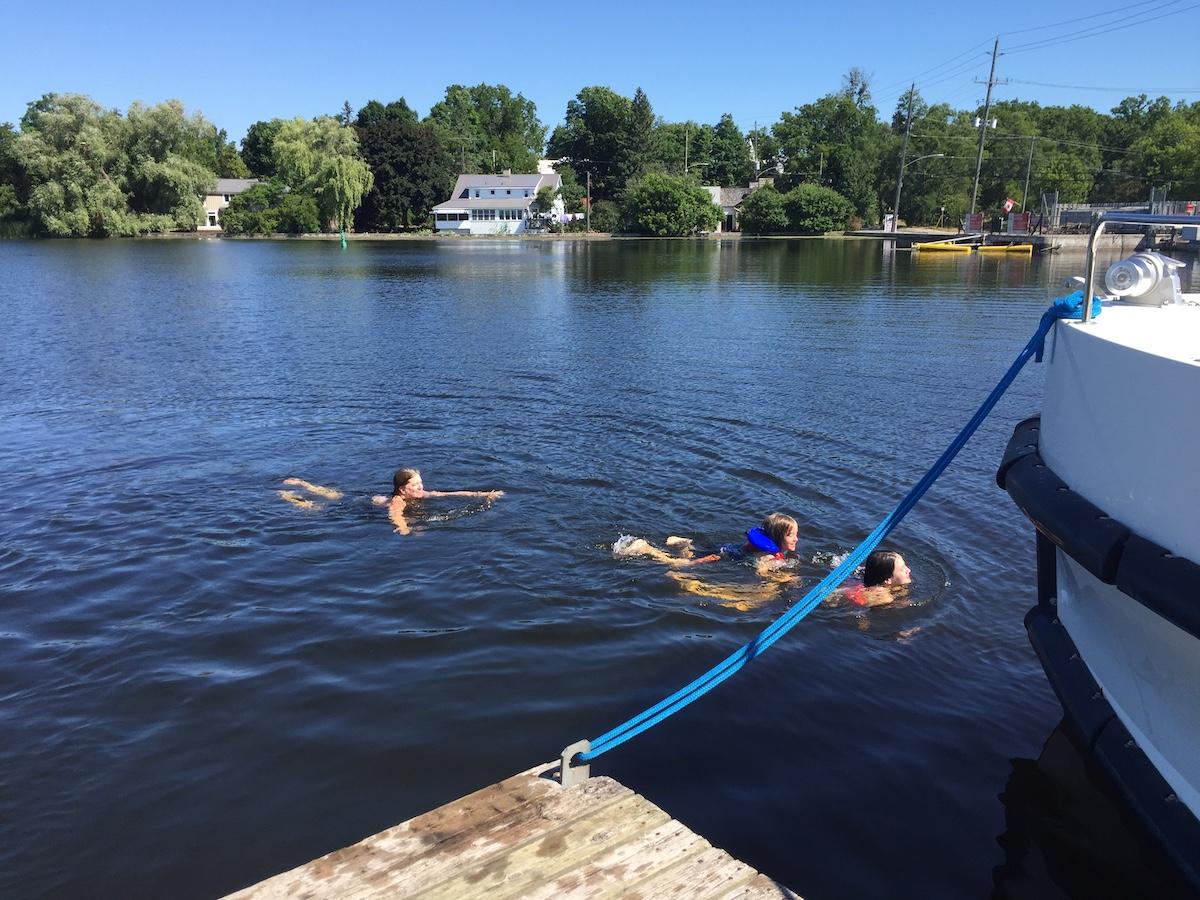
The Rideau Canal is a great swimming hole. This spot is just off where we docked in Merrickville/Rick MacKenzie
As Parks Canada looks to finalize the management plan that will guide its next decade, it wants to realize the waterway’s “full potential as a great Canadian outdoor destination.” It wants to see more people engage with the canal when they make land-based visits to the lockstations. It knows it needs to also offer more diversified experiences, like paddling, camping, cycling and hiking.
It will be a pleasure to watch this plan unfold as I return one day to travel the lower half of the canal by boat, and then retrace my steps by car and stop in at each lockstation, perhaps to sleep or maybe just to poke around.

Add comment